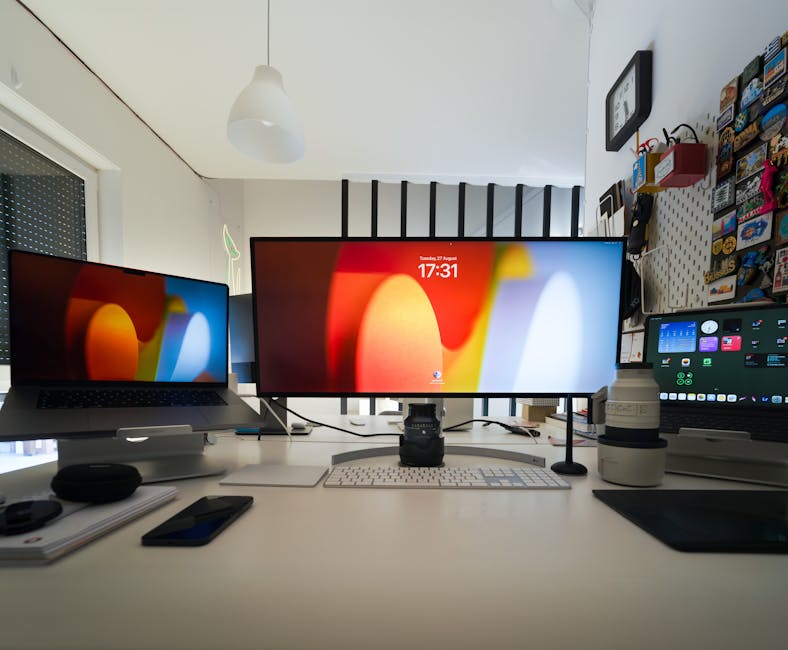Revolutionizing the Workplace: How Technology is Reshaping Office Space Utilization
“In today's rapidly evolving work environment, technology is playing a pivotal role in optimizing office spaces. This article explores how innovative tools like IoT sensors, desk booking software, and hybrid workplace solutions are revolutionizing space utilization, enhancing employee experience, and driving productivity in the modern workplace. ”

The Tech-Driven Transformation of Office Spaces
In the wake of the global shift towards flexible work arrangements, businesses are reimagining their office spaces with the help of cutting-edge technology. The modern workplace is no longer just about providing desks and chairs; it's about creating an environment that fosters productivity, collaboration, and employee well-being. Let's explore how innovative office technology tools are reshaping the way we utilize and manage our workspaces.

IoT Sensors: The Eyes and Ears of Smart Offices
Internet of Things (IoT) sensors have emerged as game-changers in workplace management. These sophisticated devices use various technologies such as infrared, ultrasonic, or microwave to detect occupancy and collect valuable data about space utilization.
Benefits of Space Utilization Sensors:
- Real-time Occupancy Tracking: Sensors provide up-to-the-minute information on which areas of the office are being used, allowing for better space management decisions.
- Social Distancing Support: In the post-pandemic era, these sensors help maintain safe distances by alerting users to occupied areas.
- Energy Efficiency: By detecting unused spaces, smart sensors can automate lighting and HVAC systems, reducing energy consumption and costs.
It's important to note that while these sensors offer precise data, they typically do so anonymously, addressing potential privacy concerns among employees.
Desk Sensors: Optimizing Workstation Usage
Desk sensors take space utilization to a more granular level. These devices, often integrated with desk booking systems, offer a wealth of benefits for both employees and facility managers.
Advantages of Desk Sensors:
- Improved Space Efficiency: By tracking desk usage patterns, companies can optimize their office layout and reduce wasted space.
- Enhanced Employee Experience: Employees can easily find available desks, leading to a smoother hot desking experience.
- Data-Driven Decision Making: Facility managers can make informed decisions about office design and capacity based on actual usage data.

Desk Booking Software: Empowering Flexible Work
As hybrid work models become more prevalent, desk booking software has become an essential tool for managing flexible workspaces. This technology allows employees to reserve desks or meeting rooms in advance, ensuring they have a suitable workspace when they come to the office.
Key Features of Desk Booking Systems:
- User-Friendly Interface: Employees can easily view and book available spaces through mobile apps or web interfaces.
- Integration with Calendar Systems: Seamless integration with existing calendar tools for efficient scheduling.
- Analytics and Reporting: Provides valuable insights into space utilization trends and patterns.
By implementing desk booking software, organizations can create an activity-based workplace that caters to different work styles and preferences.
Hybrid Workplace Technologies: Bridging the Gap
The rise of hybrid work models has necessitated technologies that can seamlessly connect in-office and remote workers. These solutions are crucial for maintaining productivity and fostering collaboration regardless of physical location.
Essential Hybrid Workplace Tools:
- Cloud-Based Collaboration Platforms: Ensure all team members have access to necessary documents and projects from anywhere.
- Video Conferencing Solutions: High-quality video and audio capabilities for effective virtual meetings.
- Virtual Whiteboarding Tools: Enable creative collaboration for distributed teams.

The Future of Workplace Management
As we look ahead, the integration of artificial intelligence and machine learning with these office technology tools promises even more sophisticated workplace management solutions. Predictive analytics could help organizations anticipate space needs, while AI-powered assistants could streamline the booking process and optimize resource allocation.
Conclusion: Embracing the Tech-Enabled Workspace
The adoption of advanced office technology tools, space utilization sensors, and desk sensors is not just a trend—it's a necessity for businesses aiming to thrive in the modern work environment. By leveraging these technologies, organizations can create more efficient, flexible, and employee-centric workspaces that adapt to the changing needs of their workforce.
As we continue to navigate the complexities of hybrid work models, these technological solutions will play a crucial role in shaping the future of work. The key to success lies in choosing the right combination of tools that align with your organization's unique needs and culture, ensuring a seamless and productive work experience for all employees, whether they're in the office or working remotely.
By embracing these innovations, companies can not only optimize their space utilization but also enhance employee satisfaction, attract top talent, and build a resilient, future-ready workplace.